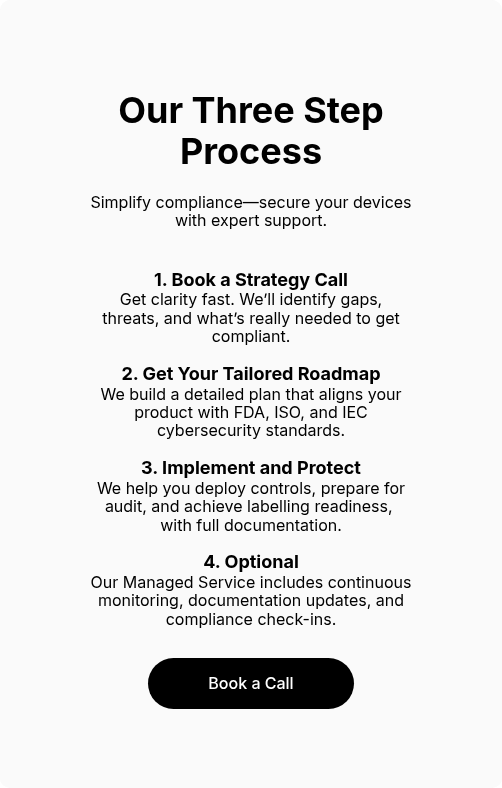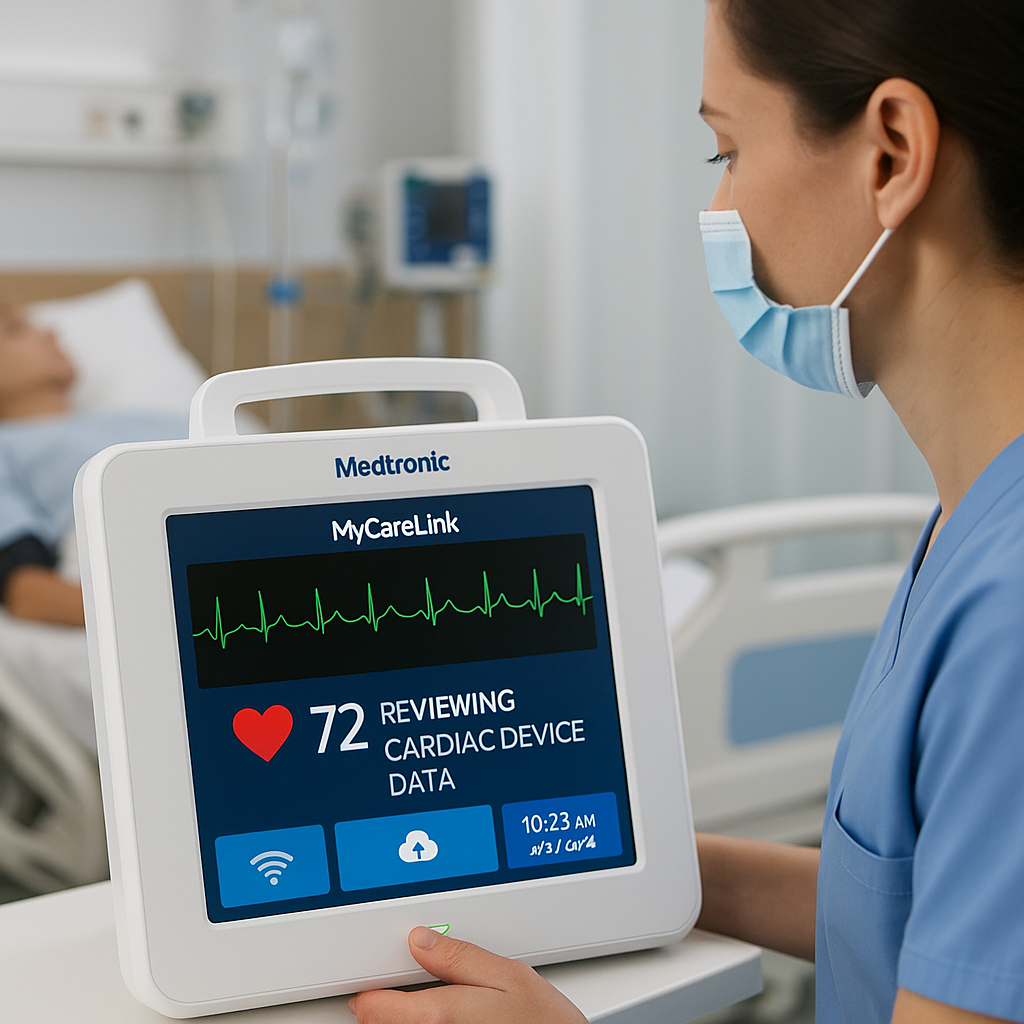Interoperability and Medical Device Cybersecurity
What FDA Standards Now Expect (And Why You Can’t Ignore It)
As medical devices become more intelligent and connected, interoperability is no longer just a “nice-to-have.” It’s a critical requirement for delivering modern healthcare. But with that connectivity comes a serious risk, one that the FDA is now watching very closely.
If your device interacts with other software, platforms, or electronic health record (EHR) systems, cybersecurity must be part of your interoperability strategy from day one. At Periculo, we help digital health companies do exactly that, secure their connected devices, meet evolving regulatory expectations, and scale confidently.
So, what does interoperability mean in the context of cybersecurity, and what does the FDA expect from manufacturers now?
What Is Interoperability in Medical Device Cybersecurity?
Interoperability is your device’s ability to safely and reliably exchange data with other systems. This could include electronic health records, general-purpose platforms like iOS and Android, imaging systems, diagnostic tools, or even other medical devices.
It’s a key factor in improving patient outcomes, but it also widens your attack surface. The moment your device connects with another system, it’s no longer isolated, which introduces new risks.
Recognising this, the FDA’s 2023 cybersecurity guidance includes clear expectations for how interoperability and security should be designed together.
Why the FDA Is Focused on Interoperability (And You Should Be Too)
The FDA has made it clear: manufacturers must think about security and interoperability as one integrated process. Security can’t be bolted on later, or treated as a separate track. From the first line of code, your device must be able to interact with external systems securely.
This means devices must be designed to protect against unauthorised access, even when communicating with third-party platforms. Data that’s shared across systems must be protected from interception or manipulation. And your device needs to stay functional and safe, even when an integration error occurs.
Consider the risk if your device receives incorrect data from another system, and that data influences treatment decisions. That scenario isn’t just a design flaw—it’s potentially a breach of HIPAA and a patient safety issue.
Interoperability is no longer just a user experience challenge. It’s now a full-blown cybersecurity requirement.
What You Need to Implement to Stay Compliant
To meet FDA expectations, your device needs strong cybersecurity controls that don’t get in the way of safe interoperability.
It starts with a complete security risk analysis. You need to map out every system your device touches and identify how those connections could be exploited. That means looking at everything from hospital networks to consumer apps.
Next, your testing approach must go beyond internal validation. You need to simulate interactions with external systems like EHRs, diagnostic tools, or mobile platforms, to uncover weak spots before attackers do.
It’s also essential to anticipate how your device might be misused. What happens if a hospital network is breached? Or does a patient use an outdated version of your companion app? Documenting these scenarios helps demonstrate to auditors that you’ve accounted for real-world conditions.
All data connections whether via Bluetooth, Wi-Fi, or cellular, must be encrypted and protected by strong authentication protocols. Multi-factor authentication isn’t just best practice now; it’s expected.
Finally, your verification and validation processes need to include interoperability at every stage. It’s not enough to test device-side security alone. You must also test how securely your device performs when connected to other platforms.
At Periculo, we offer CREST penetration testing that specifically evaluates these interoperability risks throughout the device lifecycle.
What Happens If You Ignore Interoperability?
This isn’t a theoretical problem. Interoperability has already introduced real-world vulnerabilities in several medical products.
Devices can be compromised indirectly through insecure third-party platforms. Patient data can be spoofed or corrupted during transmission, leading to harmful or incorrect treatment decisions. If that data is shared without proper controls, it can also result in serious HIPAA violations.
From a business standpoint, ignoring these risks can lead to failed audits, market access delays, or regulatory rejection. And once your device is in the field, especially in patient homes, you lose a level of control over the network environment. That’s why cybersecurity planning must begin at the design stage, not after deployment.
What You Should Do Now
If you’re building or updating a connected medical device, the time to act is now.
Start by assessing your ecosystem. You need to understand every integration point and evaluate where the risks lie. This should happen before your product reaches auditors or regulators.
You’ll also want to test your device’s resilience to interoperability challenges. Simulating data exchanges across various systems and environments is key to identifying vulnerabilities early.
To support all of this, you need a compliance roadmap that works with your development pace. At Periculo, we help teams align with FDA requirements, ISO 81001-5-1, and EU MDR Annex I, without slowing down your product timelines.
Interoperability Is a Competitive Advantage—If It’s Secure
When designed securely, interoperability becomes a powerful asset. It allows your product to fit seamlessly into complex healthcare environments, enhances your value to partners, and improves patient care.
But if you overlook the risks, interoperability can quickly become a liability, one that compromises patient trust, leads to costly compliance failures, or exposes your company to lawsuits.
Ready to Secure Your Connected Medical Device?
Book a Discovery Call
%20(1)%20(1).png?width=309&height=69&name=image-001%20(2)%20(1)%20(1).png)



